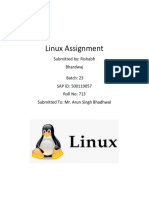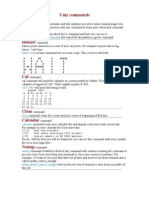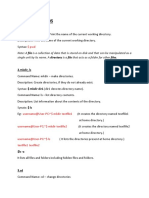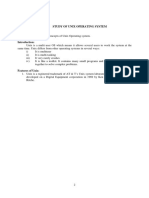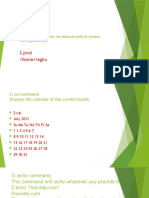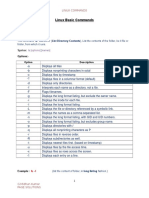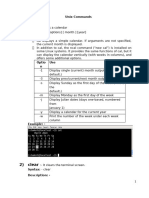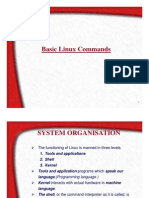0% found this document useful (0 votes)
54 views81 pagesLinux Basics for MCA Students
The document discusses 10 Linux commands: mkdir, ls, cd, rmdir, pwd, cat, cp, rm, mv, and head. It provides the syntax, examples of use, and common options for each command. The commands covered allow users to create and remove directories and files, navigate directories, view and concatenate file contents, copy and move files or directories, and view the beginning of files.
Uploaded by
nitinsingaur.bizCopyright
© © All Rights Reserved
We take content rights seriously. If you suspect this is your content, claim it here.
Available Formats
Download as PDF, TXT or read online on Scribd
0% found this document useful (0 votes)
54 views81 pagesLinux Basics for MCA Students
The document discusses 10 Linux commands: mkdir, ls, cd, rmdir, pwd, cat, cp, rm, mv, and head. It provides the syntax, examples of use, and common options for each command. The commands covered allow users to create and remove directories and files, navigate directories, view and concatenate file contents, copy and move files or directories, and view the beginning of files.
Uploaded by
nitinsingaur.bizCopyright
© © All Rights Reserved
We take content rights seriously. If you suspect this is your content, claim it here.
Available Formats
Download as PDF, TXT or read online on Scribd
/ 81

